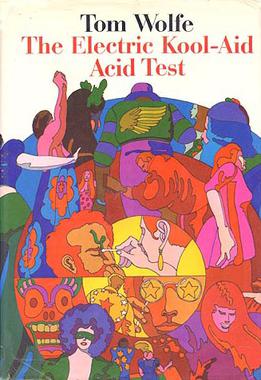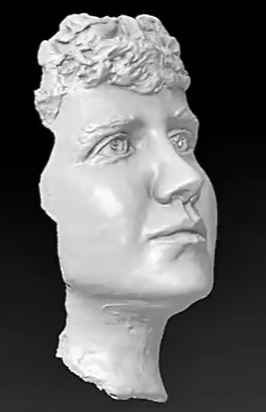
Gonzo journalism is a style of journalism that is written without claims of objectivity, often including the reporter as part of the story using a first-person narrative. The word "gonzo" is believed to have been first used in 1970 to describe an article about the Kentucky Derby by Hunter S. Thompson, who popularized the style. It is an energetic first-person participatory writing style in which the author is a protagonist, and it draws its power from a combination of social critique and self-satire. It has since been applied to other subjective artistic endeavors.

Hunter Stockton Thompson was an American journalist and author. He rose to prominence with the publication of Hell's Angels (1967), a book for which he spent a year living with the Hells Angels motorcycle club to write a first-hand account of their lives and experiences. In 1970, he wrote an unconventional article titled "The Kentucky Derby Is Decadent and Depraved" for Scanlan's Monthly, which further raised his profile as a countercultural figure. It also set him on the path to establishing his own subgenre of New Journalism that he called "Gonzo", a journalistic style in which the writer becomes a central figure and participant in the events of the narrative.

Elizabeth Cochrane Seaman, better known by her pen name Nellie Bly, was an American journalist, who was widely known for her record-breaking trip around the world in 72 days in emulation of Jules Verne's fictional character Phileas Fogg, and an exposé in which she worked undercover to report on a mental institution from within. She was a pioneer in her field and launched a new kind of investigative journalism.

Creative nonfiction is a genre of writing that uses literary styles and techniques to create factually accurate narratives. Creative nonfiction contrasts with other nonfiction, such as academic or technical writing or journalism, which are also rooted in accurate fact though not written to entertain based on prose style. Many writers view creative nonfiction as overlapping with the essay.

The Electric Kool-Aid Acid Test is a 1968 nonfiction book by Tom Wolfe written in the New Journalism literary style. By 1970, this style began to be referred to as Gonzo Journalism, a term coined for the work of Hunter S. Thompson. The book presents a firsthand account of the experiences of Ken Kesey and a group of psychedelic enthusiasts, known as the Merry Pranksters, who traveled across the United States in a colorfully-painted school bus they called Furthur. Kesey and the Pranksters became famous for their use of psychedelic drugs to achieve expansion of their consciousness. The book chronicles the Acid Tests and encounters with notable figures of the time, and describes Kesey's exile to Mexico and his arrests.
Investigative journalism is a form of journalism in which reporters deeply investigate a single topic of interest, such as serious crimes, racial injustice, political corruption, or corporate wrongdoing. An investigative journalist may spend months or years researching and preparing a report. Practitioners sometimes use the terms "watchdog reporting" or "accountability reporting".
New Journalism is a style of news writing and journalism, developed in the 1960s and 1970s, that uses literary techniques unconventional at the time. It is characterized by a subjective perspective, a literary style reminiscent of long-form non-fiction. Using extensive imagery, reporters interpolate subjective language within facts whilst immersing themselves in the stories as they reported and wrote them. In traditional journalism, the journalist is "invisible"; facts are meant to be reported objectively.

Raoul Duke is the partially fictionalized author surrogate character and sometimes pseudonym used by Hunter S. Thompson as the main character and antihero for many of his works. He is perhaps best known as the narrator for his 1971 autobiographical novel Fear and Loathing in Las Vegas. The book was originally written under the name Raoul Duke. The character wears a bucket hat and yellow tinted aviator sunglasses.
"The Kentucky Derby Is Decadent and Depraved" is a seminal sports article written by journalist Hunter S. Thompson on the 1970 Kentucky Derby, which first appeared in Scanlan's Monthly in June of that year. The article marked the birth of what would become known as "gonzo journalism".

Frank Thomas Moorhouse was an Australian writer who won major national prizes for the short story, the novel, the essay and for script writing. His work has been published in the United Kingdom, France and the United States, and translated into German, Spanish, Chinese, Japanese, Serbian and Swedish.

Ted Conover is an American author and journalist who has been called a "master of immersion" and "master of experience-based narrative nonfiction." A graduate of Amherst College and a former Marshall Scholar, he is also a professor and past director of the Arthur L. Carter Journalism Institute of New York University. He teaches graduate courses in the New York University Literary Reportage concentration, as well as undergraduate courses on the "journalism of empathy" and undercover reporting.
Narrative Journalism, also referred to as literary journalism, is defined as creative nonfiction that contains accurate, well-researched information. It is related to immersion journalism, where a writer follows a subject or theme for a long period of time and details an individual's experiences from a deeply personal perspective.
Natasha Walter is a British feminist writer and human rights activist. She is the author of a novel, A Quiet Life (2016), three works of non-fiction: Before the Light Fades: a memoir of grief and resistance, Living Dolls: The Return of Sexism, and The New Feminism. She is also the founder of the charity Women for Refugee Women.

Fear and Loathing in Las Vegas: A Savage Journey to the Heart of the American Dream is a 1971 novel in the gonzo journalism style by Hunter S. Thompson. The book is a roman à clef, rooted in autobiographical incidents. The story follows its protagonist, Raoul Duke, and his attorney, Doctor Gonzo, as they descend on Las Vegas to chase the American Dream through a drug-induced haze, all the while ruminating on the failure of the 1960s countercultural movement. The work is Thompson's most famous book and is noted for its lurid descriptions of illicit drug use and its early retrospective on the culture of the 1960s. Thompson's highly subjective blend of fact and fiction, which it popularized, became known as gonzo journalism. Illustrated by Ralph Steadman, the novel first appeared as a two-part series in Rolling Stone magazine in 1971 before being published in book form in 1972. It was later adapted into a film of the same title in 1998 by director Terry Gilliam, starring Johnny Depp and Benicio del Toro, who portrayed Raoul Duke and Dr. Gonzo, respectively.
The term "journalism genres" refers to various journalism styles, fields or separate genres, in writing accounts of events.
Mark Dapin is an Australian journalist, author, historian and screenwriter. He is best known for his long-running column in Good Weekend magazine.
Nina Mason Pulliam was an American journalist, author, and newspaper executive in Arizona and Indiana, where she was also well known as a philanthropist and civic leader. Pulliam began her career as a journalist in Indiana and worked with her husband, Eugene C. Pulliam, as founding secretary-treasurer and a member of the board of Central Newspapers, Incorporated, the media holding company he established in 1934. Following her husband's death in 1975, she served as president of the company until her retirement, in 1979, and as publisher of two of the company's newspapers, the Arizona Republic and the Phoenix Gazette, from 1975 to 1978. She also wrote a series of articles that were published in North American newspapers and later compiled into several books.

The Girl Puzzle Monument honoring activist and journalist Elizabeth Cochrane Seaman, pen name Nellie Bly (1864-1922), is a public sculptural installation by American artist Amanda Matthews, CEO/Partner of Prometheus Art Bronze Foundry and Metal Fabrication. The installation is located on the northern tip of Roosevelt Island in Lighthouse Park in the New York City borough of Manhattan. The location is significant because of its proximity to the remains of the old Blackwell Island Asylum - The Octagon is the last remnant of the original building where Nellie Bly went undercover as a patient while working as a reporter at the New York World. Nellie Bly wrote of the mistreatment of patients at the asylum in a series of articles and then in 1887 had them compiled into a book, Ten Days in a Mad-House.
A stunt girl was a woman investigative journalist in the late 19th and early 20th centuries in the United States. The term was often used derogatorily.

Helping to lay the foundations of eco-cultural Immersionism, the Brooklyn Immersionists were a community of artists, musicians and writers that integrated themselves and their creations into an industrial area of Williamsburg, Brooklyn in the 1990s. According to the art historian, Jonathan Fineberg, Williamsburg's creative community was devoted to "a richer, more dynamically interacting whole," and innovated new forms of interconnected art and culture in the streets, rooftops, abandoned warehouses and local media networks. Separated from Manhattan's arts institutions and aesthetics, the Immersionists moved beyond a postmodern preoccupation with surfaces and issues of interpretation, and shifted into a non-objective ethic of nurturing the world around them. The catalytic, communal and philosophical culture was discovered by the international press and attracted thousands of artists to a district that had been losing jobs overseas and coping with a burgeoning drug trade.











